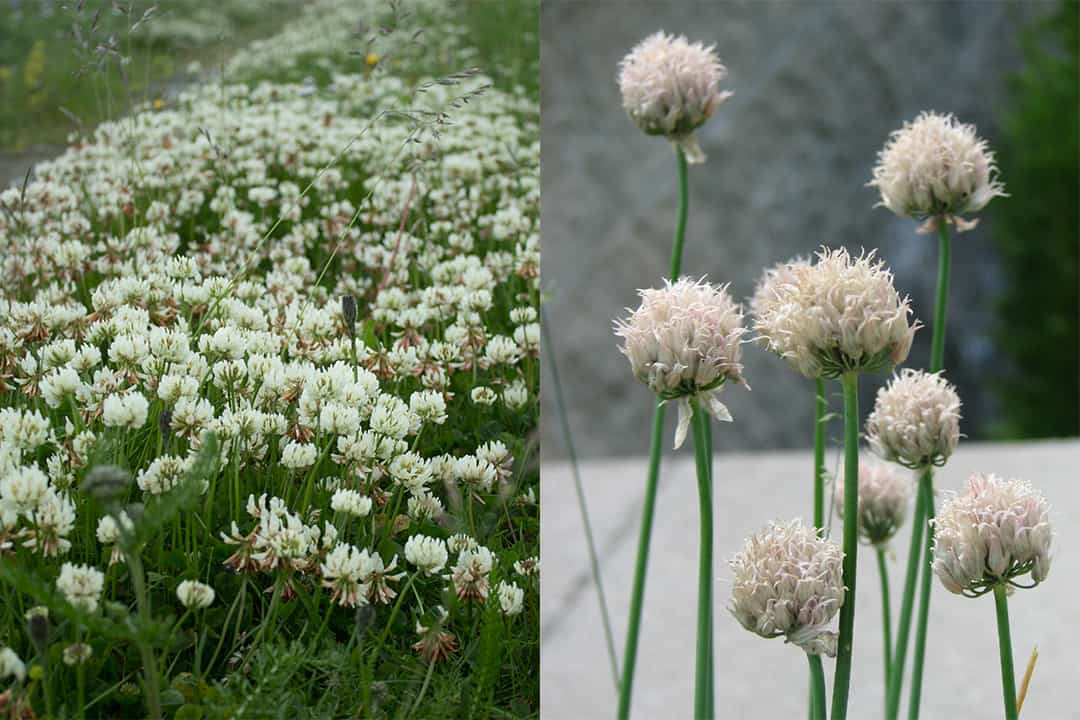Travelling by train into the city, there are a number of signs that suggest your approach to an urban centre. Perhaps, there are taller buildings and tightly packed subway cars, or a greater frequency of public art and murals.
While not necessarily as palpable, there is another change happening just beyond the tracks. Researchers at the University of Toronto have discovered that plants near urban centres — particularly common clover plants — have different genetic traits than those same species in rural environments.
These changes are understood in the context of urban evolution, an emerging field that investigates how dramatic environmental changes in urban areas affect the evolution of life.
Studying plant evolution
Marc Johnson is an associate professor in the Department of Biology at UTM who researches urban evolutionary ecology. He is one of the lead scientists for the Global Urban Evolutionary (GLUE) Project, which is believed to be the largest collaborative project in evolutionary biology. Combining data from field sites all over the world, the project studies changes to plant genetics and population adaptation across urban-rural gradients in 168 different cities.
On November 10, Johnson was one of six scientists from across Canada who were awarded the prestigious E.W.R. Steacie Fellowship from the Natural Science and Engineering Research Council (NSERC). Designed to support early-career scientists, the fellowship allows Johnson to spend two years focusing solely on research.
While the GLUE Project originated from work that began over five years ago, Johnson has been consumed by an interest in natural history and ecology since he was young. Johnson’s grandmother lived near Presqu’ile Provincial Park, and he recalls going to a natural history museum when he would visit her. He remembers spending hours questioning museum naturalists at just nine years old.
“I just wanted to be them,” Johnson explained in an interview with The Varsity. “From a young age, I’ve always been passionate about nature. I loved going outside and flipping over rocks and logs and looking at worms, insects, and ants.” Going full circle, Johnson now hosts a ‘backyard biology’ YouTube channel with his two children.
A few years ago, Johnson became interested in how organisms evolve over small spatial scales. Would there be a genetic difference between plants in a city centre and those a few kilometres away? Johnson reached out to his then-graduate student Ken Thompson, and they began investigating the common white clover — Trifolium repens L. — to explore this question.
Snowfall and self-toxicity
Thompson collected white clovers at various distances from the urban centre in four cities: Toronto, Montréal, Boston, and New York. Once the plants were collected, they were analyzed for a specific trait: cyanogenesis.
A white clover that is ‘cyanogenic’ produces toxic hydrogen cyanide (HCN) to fend off herbivores. If the clover is ingested, cellular respiration is inhibited and the herbivore can die. But, if a white clover is cyanogenic and lives in sufficiently cold temperatures, then the HCN will lyse — break apart — the clover’s own cells, and the clover will die from self-toxicity.
Johnson and his team knew that urban environments tend to be warmer than their surrounding areas due to the greater number of dark, heat-absorbing surfaces such as roofs and roads. Accordingly, Johnson hypothesized that white clovers closer to the urban centre in warmer areas would likely be cyanogenic.
The result was almost the reverse. White clovers closer to the city were less likely to be cyanogenic. Why? The researchers theorized that colder ground temperatures closer to the city centre would cause cyanogenic plants to die from self-toxicity, making cyanogenesis an unfavourable trait.
Due to how quickly snow is cleared, and the minimal amounts of green space, urban spaces tend to have less snowpack and more snow melt than rural areas. While slightly counterintuitive, the absence of snowpack can lead to colder ground temperatures. Snow cover can act as an insulator, preventing the ground from freezing.
Their result was fascinating, and unsurprisingly, many questions remained unanswered. How would a changing number of herbivores affect selection for cyanogenesis? Would similar trends be observed in cities without snowfall? PhD student James Santangelo began measuring white clovers further south in warmer temperatures, gathering samples from 16 cities along a similar longitude, from Toronto to Tampa Bay.
Only eight of the cities had clovers with a cyanogenic trait. They would need more data.
A few months later, the idea for GLUE was born. What first started as a call to 25 colleagues quickly grew to over 260 collaborators. Johnson and his team mailed sample kits to groups all across the world, and the plant samples were returned to Toronto for analysis. Now, Johnson and his lab are working to sequence the plant genomes of their samples, nearly 2,000 in all.


